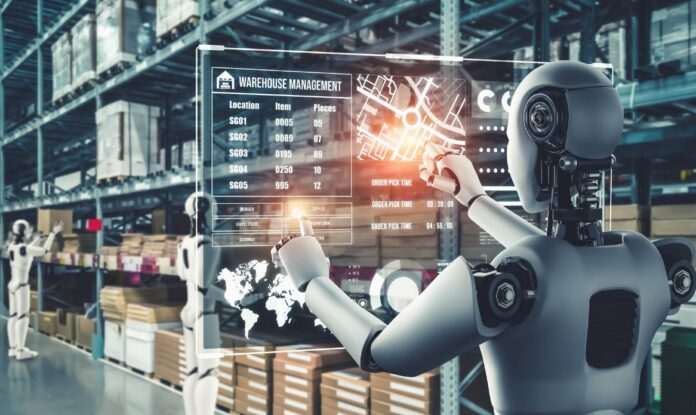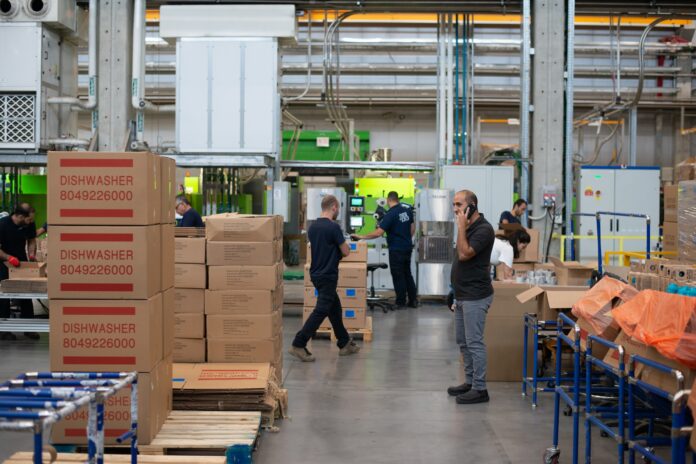
International trade is big business, and supply chains are the lifeblood that ensures the smooth flow of goods across borders. Supply chain management is evolving, and technology is its primary driver, sweeping across its intricate networks from production to processes and operations.
How far has the digital transformation gone, and should we engage newer technologies to optimize supply chain management further? 80% of respondents in a recent survey presented in the MHI annual industry reports expect the digital supply chain to dominate the sector within 5 years. Companies not advancing with digital transformation may find it hard to cope in the coming years.
In this article, you’ll see what the giants are doing, from automating their processes and operations to relying on data to cut costs, increase customer satisfaction, and boost profit. Let’s explore the digital transformation of supply chains, where technology is the magic wand that brings efficiency and effectiveness to global trade.
The Digital Pulse of Global Trade

Amidst this digital transformation, the impact of currency exchange rates on global trade remains critical. Read more about the DXY index which shows a weighted average of a basket of major currencies against the U.S. dollar, acts as a compass in the ever-changing landscape of international trade. Fluctuations in the DXY index significantly impact global trade flows, influencing the competitiveness of imports and exports.
Armed with digital tools and real-time data, supply chain managers can closely monitor changes in the DXY index and adapt their strategies accordingly. Companies can explore cost-effective import opportunities when the index rises, indicating a stronger U.S. dollar. Conversely, when the index falls, making the U.S. dollar weaker, businesses can capitalize on the increased competitiveness of their exports.
The Digital Transformation Imperative ─ Unleashing Tech Powers
Many supply chains are bidding farewell to manual processes and embracing cutting-edge technologies like never before.
Statistics show that 50% of companies believe digital transformation will fundamentally change supply chains, making them more efficient and responsive. According to a recent publication by Supply Chain Digital, the urgency to embrace digital solutions is clear, with 70% of company executives already investing in digital transformation initiatives.
The connection between technology and supply chains has given birth to a myriad of advancements that streamline the flow of goods across continents. One such marvel is the Internet of Things (IoT), where everyday objects are embedded with sensors, enabling them to communicate and exchange information.
Big players like Amazon have leveraged technologies like the IoT and RFID (Radio-Frequency Identification) to provide granular visibility into every stage of the supply chain. In 2022, only 6% of businesses had complete insight into their supply chain, while 69% needed more comprehensive visibility, according to Zippia.
Imagine a scenario where every pallet, container, or humble cardboard box is equipped with sensors that monitor location, temperature, humidity, and even shock levels. This treasure trove of data allows supply chain managers to track shipments in real time, ensuring they remain intact and unspoiled. Furthermore, predictive analytics algorithms crunch this information to identify potential bottlenecks or disruptions, enabling proactive measures to keep the supply chain flowing smoothly.
Artificial Intelligence (AI)

AI is essential to any discussion of supply chain digital transformation. AI-powered algorithms analyze vast supply chain data, enabling predictive insights and intelligent decision-making. From demand forecasting to optimizing routes and inventory management, AI empowers supply chains to operate at peak efficiency, reducing costs and improving customer satisfaction.
This technology lets supply chain managers make real-time data-driven decisions. For example, AI algorithms can analyze historical sales data, market trends, and external factors such as weather patterns to generate accurate demand forecasts. Thereby optimizing production, reducing waste, and ensuring product availability when and where needed, improving customer satisfaction and profitability.
Automation and Robotics
This digital transformation has also brought forth the widespread adoption of automation and robotics in supply chains. In fact, the 2021 global market for warehouse robotics was valued at $9.8 billion and is projected to touch $23.09 billion by 2027. Robotic technologies, such as automated guided vehicles (AGVs), robotic arms, and autonomous drones, are some of the major drivers and are helping to transform traditional warehouses into smart, efficient hubs of activity.
Automation and robotics enhance various supply chain processes’ speed, accuracy, and reliability. They streamline order fulfillment, reduce cycle times, and minimize picking, packing, and shipping errors. Digital giants like Amazon have pioneered the use of robotic fulfillment centers, where robots work alongside human employees to maximize efficiency and productivity.
Supply bots have taken warehouses by storm. They have become the stars of the show with their agile movements and precise picking capabilities. These machines work tirelessly, ensuring products reach their destinations with lightning speed and unmatched accuracy.
Empowering Supply Chain Collaboration

Major players in the industry have recognized the power of collaboration in supply chain management. Cloud-based platforms and collaboration tools enable real-time information sharing and communication among supply chain partners.
Cloud computing allows stakeholders to access and share data securely from anywhere, fostering collaboration across geographical boundaries. Collaborative platforms enable joint forecasting, synchronized planning, and coordinated execution, promoting operational efficiency and reducing lead times. By breaking down silos and creating a connected ecosystem, the biggest companies facilitate seamless coordination and enhance supply chain resilience.
Sustainability ─ Greening the Supply Chains
Newer supply chain initiatives have also opened avenues for sustainability. With increased visibility and data-driven insights, companies can identify areas of waste and inefficiency, leading to eco-friendly practices. For instance, IoT sensors can monitor energy consumption in warehouses and distribution centers, enabling efficient resource utilization. These devices must interface with an intelligent building management platform that analyzes real-time and historical building data to maximize their potential.
AI algorithms can optimize transportation routes, reducing fuel consumption and carbon emissions. Additionally, technology enables the tracking of environmental impacts throughout the supply chain. With its transparent and immutable nature, blockchain allows companies to trace the origin of raw materials, ensuring responsible sourcing. This transparency also promotes accountability and encourages collaboration between supply chain partners to implement sustainable practices collectively.

The Bottom Line
The digital transformation of supply chains has ushered in a new era of global trade, where technology catalyzes seamless operations, enhanced efficiency, and unparalleled insights. From the mesmerizing IoT to the power of AI and the imperative of sustainability, supply chains are evolving into agile and eco-friendly networks that drive economic growth and customer satisfaction.
So buckle up, and let us embrace this digital revolution as we traverse the digital highways of global trade, leaving no stone unturned, no pixel unexplored, and no opportunity for progress untapped.











